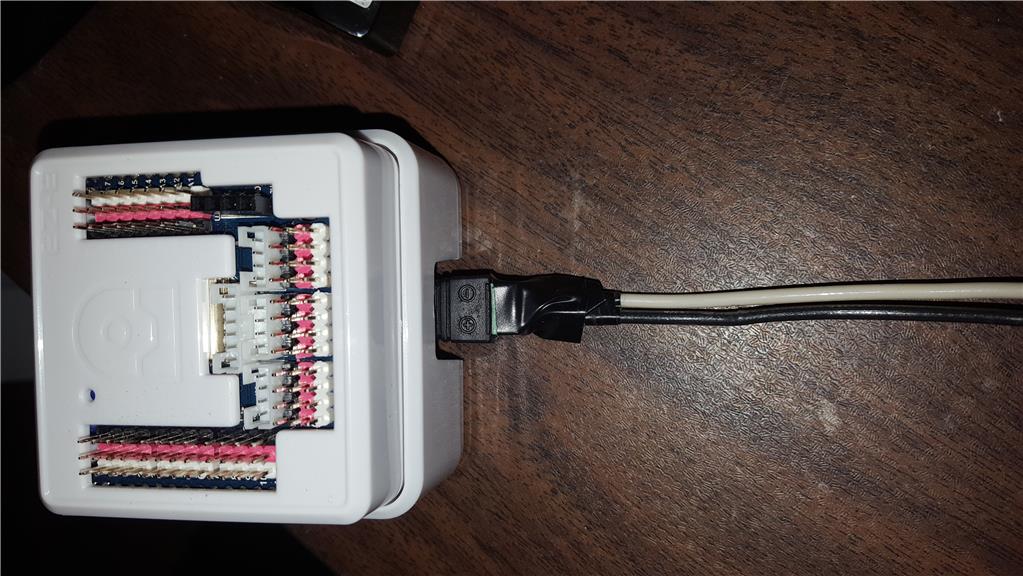I'm making this thread to gather all the power supply references from other threads into one, neat and tidy thread.
Power supplies:
12v car PC power supply: www.powerstream.com/DC-PC-12V.htm
This gives you 12V, 5v, and 3v at high amperages, which will power sensors, servos, and lots of lights.
Standard PC Power Supply: www.bestbuy.ca/en-CA/category/power-supplies/20380.aspx
Can be found everywhere! And if you want cheap, go to eWaste and pick out one for free-$20! Just get a high Wattage supply.
Courtesy @Steve_G from @fxrtst's Power supply thread:
"I had a bit of a search for you, and came up with the following fixed voltage supplies which was all from one website called TCR Electronics and are all under 100 bucks. Searching other sites pretty much came up with the same makes and models. The ones I've linked to are the best of the bunch that I think meet some of your requirements. I threw a couple of 20 amp supplies in as well in case anyone else is looking...
7.5v 40 amp 345 watts 215x115x50 $44.80 for 1 to 9 units (cheaper after that). www.trcelectronics.com/View/Mean-Well/SE-350-7.5.shtml
7.5v 40 amp 300 watts 199x105x41 $76.50 www.trcelectronics.com/View/Mean-Well/HRP-300-7.5.shtml
7.5v 20 amp 150 watts 199x99x50 $43.90 www.trcelectronics.com/View/Mean-Well/SP-150-7.5.shtml
7.5v 20 amp 150 watts 199x99x30 $36.90 www.trcelectronics.com/View/Mean-Well/RSP-150-7.5.shtml
7.5v 32 amp 240 watts 190x93x50 $50.90 www.trcelectronics.com/View/Mean-Well/SP-240-7.5.shtml
And the smallest I found at a reasonable price, but at 20 amps...
7.5v 20 amp 150 watts 159x97x38 $47.70 www.trcelectronics.com/View/Mean-Well/HRP-150-7.5.shtml
Anything smaller in the way of form factor, and you're looking to pay out at three digit figures. The one other plus about this website is that they do bulk buy discounts too."
Courtesy @Steve_G from @Askwpccoach's "How Can I Provide Continuous Power To Jd From An Ac Outlet Or Battery That Will" Thread
"So a 7.4 volt, 20 amp power supply is what you will need to have JD working at his best along with a female mini deans socket. This switching power supply is a good example of what you would need, although if you look around, you can find cheaper power supplies. " m.ebay.com/itm/TEKPOWER-USA-TP3020E-SWITCHING-DC-POWER-SUPPLY-VARIABLE-0-30-VOLTS-0-20-AMPS-/201413831219?nav=SEARCH
Courtesy @Mathprof from his "Usb or Ac-Dc Conversion as a Lipo battery replacement" Thread
"Ok, so a 20 amp supply is a good target. Just looking around a little, I found this:
P/N: RSP-150-7.5 7.5vdc Power Supply Approx Power: 150 Watts Max Current: 20 Amps Enclosed 1U low profile 30mm, built-in active PFC function, built in constant current limiting, LED indicator for power on, adjustable output voltage, and universal AC input range: 85~264vac. Dimensions: 199x99x30mm More Info, Quotes, Purchase $36.90 ea."
www.trcelectronics.com/7.5-volt-power-supplies-chassis-1.shtml
As for Tips, Give out your own! Post them below! More power supply references? Add them below following the numbering sequence.(Ended at 5)
Now you can reference one thread to give an answer instead of multiple ones with many posts to sort through.


Another thread probably could have been made for this, but to answer your question, a pic outputs 12v, 5v, and 3v. Any servo usually uses 5v or 7.4v. ez-robot servos use 7.4v. So, you will need to step down the 12v rail. Use a buck step down converter, but MAKE SURE IT SUPPLIES ENOUGH AMPS. A servo will use a around 1 amp max, so make sure if it's a 3 amp converter, you have a max of 3 servos on it. You can connect multiple buck converters to the 12v rail, just don't exceed the 20amps or so it can provide, or the power supply will cut out, or burn up.
1 amp may be enough for the micro servos sold in the shop, but I believe the EZ-Robot HD servos can draw 3 amps and possibly even more, due to the inrush.
With all due respect to you guys, you really need to be careful when giving advice on power consumption and recommendations. Steve is closer to the truth but some HD servos can draw more than 3 amps. The best advice is to look at the specs of the serov(s) you are going to be using and get a power supply or power converter that will deliver at least 1/4 more amps than the max amps your motors need, whether they are simple DC motors or servos. If your power supply or converter will be powering more than one motor then simply add up the total max amp draw that the specs state of all motors and get a power supply that will supply at least 1/4 more the that.
As far as voltage; a computer power supplies will usually supply both 12 & 5 vdc and sometimes 3vdc. They are usually rated in Watts and you need to use Ohm's law to do the conversion to find out what they will be able to supply in amps. There is lots of info and youtube vids on the internet on how to both use Ohm's law and to use a computer PS as a power supply. Simply do a Google search on each subject and there will be a ton of links available to study and educate yourself. One thing to be aware of is how quickly a computer PS will be able to supply an inrush of a voltage demand. I've read that computer power supplies are slow to supply the demand of a DC or servo motor and you may have trouble with brownouts or even see the PS shutdown. I've not personally seen this issue but it's something to keep in mind when you're designing your power circuit.
Good luck and have fun!
My next Project has a mix of voltages needed to run servos, sensors, etc. (3 vdc, 5 vdc, 12 vdc and 7.2 vdc.). I understand the 7.2 vdc for the servos is the odd one for the supply I mentioned. I assume I will get a regulator for the servos to fix that issue. Has anyone heard from @ Jsterne ? Wasn't he building regulators at one time?
Thanks to all for the info and feedback. I will dig deeper to meet my power needs.
Ron R
Wasn't sure whether it was best to start a new thread for this or not -- Please let me know if that would be more appropriate... (But i think this is a good place for the pictures and information i'm posting below as well as any feedback it may garner) I attempted to follow the advice provided here (and in "Amps, Volts, Power Converters and Power Supplies" https://synthiam.com/Community/Tutorials/163/1 and other threads etc.)
I needed a power supply for a robot with 10 EZ-Robot servos, so i bought the Mean-Well RSP-150-7.5 7.5v 20 amp 150 watts 199x99x30 $36.90 www.trcelectronics.com/View/Mean-Well/RSP-150-7.5.shtml
I wired it as shown below:
For the AC power cord i snipped off the end of a computer power cord (Note: altho i read somewhere that the 'brown wire should be hot and the blue neutral, my multimeter said otherwise and i believed it).
I connected the barrel jack to the white and black via solid-core copper wire (taken from Romex 14/2 cable) as shown below:

(Note: i had a 12 gauge Romex wire but it was too big for the barrel jack)And when plugged in, the barrel jack shows 7.4V as shown below:
The EZB is working, it connects to wifi and I'm able to move the servos and use them in scripts.
Still, I would like to get feedback from any veterans who have time to comment about this setup. I'm not a hardware guy, so i expect that there is room for improvement, ha.
Thanks -Richard 'twitch' R.
may i ask ,does the power supply have an on/off swiths?
@rregister.
One thing I wanted to point out for you which is something I touched on in step 7 "Multimeters" in my tutorial you linked to,. You quoted...
Brown wires in AC are indeed "Live" or "Hot" and blue is "Neutral" (and if present, green/yellow is Earth). But here’s the thing. AC, by definition, is alternating current, so it is not polarised and current flows in both directions. Basically this means that you can actually swap the wires around and most of your AC devices would still work with no damage. This is why your meter said the opersite to what you read about wire colours. But with that said, not only is it good practice to use brown as "Live" and blue as "Neutral", but there is a safety aspect too.
For an example, I’ll use a table lamp with an in-line switch. Some AC appliances, like lamps, have a switch on just one of the two wires, usually the "Live" wire. The outlet has a "Live" and a "Neutral" wire - the "Neutral" wire is connected to ground somewhere, either at the local sub-station or on the street outside your house. The "Live" wire is at 120V US or 240V UK, compared to "Neutral".
In the lamp itself, the "Live" wire of the light bulb socket is at the bottom, and the "Neutral" lead is on the sides. Sticking your finger in a "Live" socket (not recommended) with the correct polarity it is much more difficult for someone to accidentally touch the "Live" wire or terminal.
So when using a correctly wired and polarised table lamp, switch and plug, there is a guarantee that the switch will disconnect the supply voltage on the "Live" side of the lamp. If the polarity is reversed, then the entire appliance is still live and energised even when it is off, and could be dangerous if you were changing the bulb and happened to touch the metal side of the bulb... as you will get seriously zapped.
DC (direct current) has to be connected the CORRECT way only.
So just for good practice, I’d suggest swapping your blue and brown wires to where they should be on your power supply (as long as the mains plug is wired correctly too).
Hope that helps.
Hi Steve G. Thank you for the explanation -- yes that is very helpful and I did not fully understand that set of issues, so I have a better handle on it now -- much appreciated! However, my conclusion is still that the cable itself was mis-wired in terms of the blue and brown cable-color, and I had a bunch of measurement photos to show you in order to try to prove it, then I remembered, hey I still have the severed plug -- here it is:
Blue=LiveHot -- What do you think?
And Hi to Nomad 6R too -- this power supply does not have a switch (prolly you were thinking along these same lines as Steve G?).
Thanks for your feedback and any other comments are welcome!
Richard 'twitch' R.